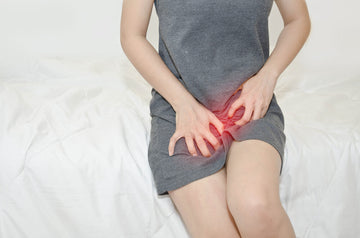A woman's overall health depends on her hormonal balance, which affects the menstrual cycle, fertility, metabolism, mood, and skin health. Changes in hormone levels can disrupt the normal function of the ovaries, causing various diseases such as PCOS vs PCOD. Both conditions involve the formation of ovarian cysts and are often associated with weight gain, acne, and irregular periods. Although there are many common symptoms, the causes, severity, and effects on fertility differ between the two. PCOS is a systemic metabolic disease that requires treatment and follow-up for hormonal and reproductive health, while PCOD is a mild hormonal imbalance that can be managed with lifestyle changes.
What Is PCOD (Polycystic Ovarian Disease)?
It occurs when several immature or partially mature eggs in the ovaries turn into small cysts . Stress, choice of a bad lifestyle, and hormonal imbalance are the three major reasons. Women with PCOD may otherwise experience unusual periods, acne, hair loss, and mild weight gain. The effect on fertility may be temporary. As this condition is usually mild, it can be well controlled by a good diet, regular exercise, stress-free life, and a natural hormonal balance restorer.
What Is PCOS (Polycystic Ovary Syndrome?
An excess of male hormones or androgens causes this more severe metabolic and hormonal condition, which leads to many ovarian cysts. It is often caused by insulin resistance and genetic factors that interfere with hormone balance and ovulation. Women with PCOS may experience infertility, irregular cycles, acne, excessive hair growth, and obesity. Since it is different from Polycystic Ovary Disease, in PCOS, the patient needs to be treated and looked after for a longer duration for the general hormonal/reproductive health.
PCOS vs PCOD: Key Difference Between PCOS and PCOD
Aspect |
PCOD |
PCOS |
Nature |
It is a hormonal disorder that affects menstrual regularity and ovulation without affecting the overall metabolism of the body. It usually causes mild hormonal changes and small ovarian cysts. |
It is a hormonal and metabolic disease that affects the entire endocrine system and leads to severe ovulation dysfunction, high androgen levels, and comorbidities such as insulin resistance and weight gain. |
severity |
Unlike that, PCOD is not so severe and can be managed successfully with simple home remedies without medical interference in many cases, such as stress relief, physical activity, and a balanced diet. |
Since PCOS is more aggressive and chronic in nature, requiring continuous medical supervision, it's more difficult to live with as you have to manage your hormones, wind down, and keep an eye on them all the time to make sure nothing is getting out of hand. |
Hormone Level |
Women with PCOD have a mild elevation in androgens, which may result in acne or hair loss. But hormone levels typically return to normal with appropriate lifestyle modifications. |
Excess production of androgens in women with PCOS leads to these symptoms: hair loss, acne, and growth of facial hair. There are also several long-term hormonal imbalances that are best attended to medically. |
Ovulation |
PCOD often postpones delayed ovulation because eggs mature slowly. Yet regular menstrual cycles may resume once hormone levels are balanced through stress reduction and lifestyle modifications. |
Because there is frequently an ovulatory dysfunction due to high androgens and insulin resistance, leading to absent or very infrequent ovulation, a woman with this condition will find it difficult to conceive without targeted hormonal or fertility therapy.
|
Reversibility |
In most cases, PCOD can be reversed naturally by managing stress, eating a healthy diet, getting consistent exercise, and balancing hormones, all of which help women to begin ovulating on a regular basis. |
While PCOS cannot be cured once and for all, it can be easily managed with medications, weight loss, and long-term hormone therapy to improve reproductive health and reduce symptoms. |
Long-Term Hazards |
PCOD is rare to cause long-term threats if it is treated in time, and it will also decrease the chances of a woman having severe hormone or metabolic disorders. |
PCOS is associated with increased risk for type 2 diabetes, heart disease, obesity, and infertility if left untreated, emphasizing the need for ongoing lifestyle and pharmacologic management. |
What are The Symptoms of PCOS VS PCOD?
Each woman can experience different symptoms of PCOS vs PCOD based on how severe and regular her hormonal imbalance is. These symptoms and a visit to the doctor can make the disease more manageable.

-
Irregular or missed periods can lead to erratic cycles.
-
Overproduction of male hormones causes you to develop male pattern baldness.
-
oily skin, persistent acne, and sometimes black spots underarms or around the neck.
-
Unexpected weight gain or difficulty losing weight, even when following a healthy routine.
-
extensive hair loss or thinning of scalp hair.
-
recurrent mood swings, anxiety, or depression.
-
Fatigue and poor vitality, all day long.
As with all things, every woman is different when it comes to symptoms and what she experiences with them, and these are often influenced by her overall health, stress level, and lifestyle.
Conclusion
Though both PCOS vs PCOD are common hormonal disorders that affect women's reproductive systems, they differ in symptoms and severity. While PCOS is more complicated and requires lifelong medical supervision along with diet and exercise, PCOD is generally mild and can often be managed by making healthy lifestyle changes. So, to prevent complications, it is important to recognize early signs such as acne, weight changes, or irregular menstruation. Both conditions can be managed well with early diagnosis, adequate treatment, and a balanced daily routine. Because every woman’s body is unique, understanding how these conditions affect you and getting regular checkups can help you maintain hormonal balance, increase your chances of conception, and improve your overall physical and mental health.
FAQ’s:
Can PCOS or PCOD be Avoided By Changing One's Lifestyle?
Eating healthy food, exercising regularly, reducing stress, and sleeping well can help regulate hormones, reduce symptoms, and support reproductive health, especially in PCOS. Lifestyle changes and medical advice may be required even for PCOS.
Are PCOD and PCOS inherited Conditions?
There may be a hereditary component to both conditions. A family history of hormone imbalance or metabolic problems increases the risk of developing symptoms, but so do lifestyle, diet, and overall health.
Can PCOS Vs PCOD Affect Fertility Differently?
Although PCOD can delay conception for a short time, it is often reversed by changes in lifestyle. PCOS increases the risk of infertility, and they usually require medical treatment to conceive, due to repeated problems with ovulation and hormonal imbalance.
Do PCOS vs PCOD cause Weight Gain In The Same Way?
PCOD patients usually have mild to moderate weight gain, which they can control by diet and exercise. In PCOS, there are hormonal and metabolic dysfunctions that promote rapid or persistent weight gain, especially in the abdominal region.
Is Medication Always Required For PCOS vs PCOD?
While PCOS requires medical intervention involving hormonal therapy or insulin management to control symptoms and prevent long-term implications, PCOD can be managed naturally by making lifestyle changes. PCOS is more complicated and has higher risk factors, etc.





